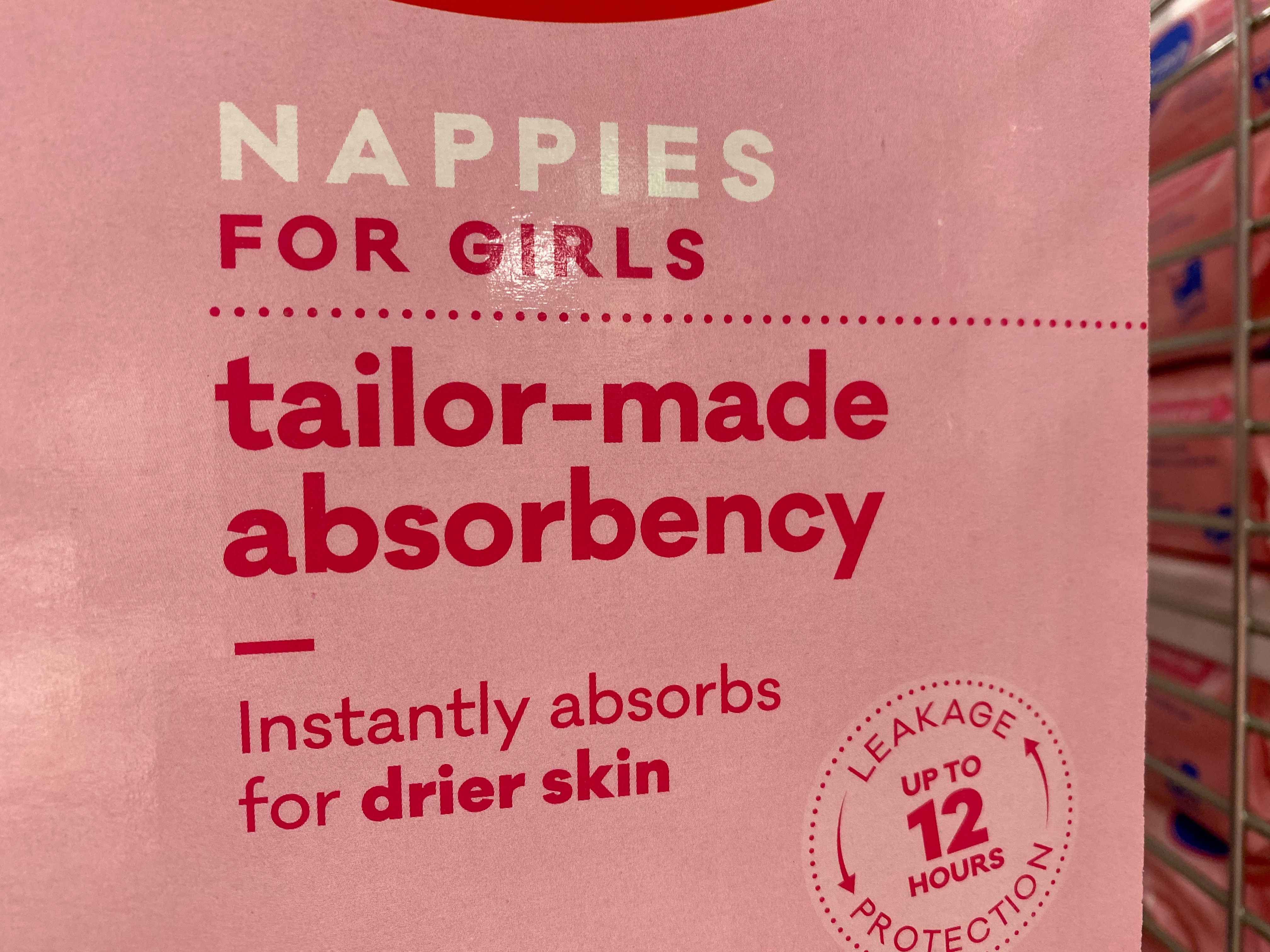Whenever I do the grocery shopping with Natasha, she often has to hurry me along as I spend time too much shaking my head at some of the ridiculous marketing, packaging and product installations that can be found around the supermarket. We all know that this environment is constructed to encourage us to buy stuff that we don’t need, however many people do not stop to critique some of the more ludicrous things. I make a point of doing it.
I do not have any children (yet), however for a long time I have been put off by the relentless gendering of products for young kids. This is one thing that I sometimes stop to observe. One product that stood out to me during a trip to the shops on the weekend was nappies. In this case, it was not just a matter of blue versus pink on the packaging, there was also this stupid claim:


Yes, that’s right: tailor-made absorbency is available for each sex! It’s now not enough simply to tell people which product to buy based on colour; we are supposed to believe that buying the incorrect nappy will lead to a less-than-optimum rate of absorption, which (who knows?) could lead to undesired spillage.
When I first read ‘tailor-made’, the image that came to my mind was one of a refined gentleman in a boutique, wearing a measuring tape around his shoulders, helping parents to measure up the finest disposable nappy for their new bundles of joy. This makes a huge difference for infants.
These days, we live in a world that is so saturated with products that companies are desperate to differentiate their own offerings in the most outrageous ways possible. Many things are simply a commodity, so they need that extra push. False advertising apparently is not permitted, however the definition of that term seems to have been made less clear. What does it really mean to advertise falsely today and how do we identify it? Clearly, if this sort of claim of ‘tailor-made absorbency’ is allowed, false advertising must be so blatant—such as the reporting of a completely false statistic—for it actually to be noticed. The thing that makes this claim so laughable and yet apparently not false enough to be challenged, is that it is a mass consumer product that is being sold with the message that it has been customised. No one is taking their baby to a gentleman in a boutique to make this possible.
Disappointingly, I also believe that responsibility falls on consumers in general to call this out or make a change and they’re not going to do it. Even with all of the chatter about content and messages being ‘targeted’ and ‘personalised’, you would hope that people would realise that what they see in their online feeds, on the physical supermarket shelf or in their ‘watch-next’ queue is not really personal or tailor-made at all.
Despite what many say, I believe that we continue to live in a mass culture—it’s just that we only see a sliver of that which is delivered en masse, because we’re dim enough to inform marketers of what it is that we like. It’s the same old mass culture dressed up as personal in a saturated market of fragmented options. Online, for instance, although people may see TikTok or Instagram videos that match their interests, what is it that everyone’s talking really about? It’s the networks themselves: TikTok and Instagram. This goes back to Marshall McLuhan’s classic aphorism: the medium is the message. The personal messages that we receive matter very little (if at all); it’s the medium/platform that exerts this influence and we’re all still using the same stuff. That’s mass culture and it being sold to us falsely.
Bringing it back to nappies, I would simply say this: do not buy anything that makes such a spurious claim on its packaging or description. If you do, you’ve just told the manufacturer and its marketing people that what they have done is OK. When you think that something is ‘tailor-made’ or ‘personalised’—whether on a shelf or online—and fail to see a boutique gentleman with a measuring tape, question if it really is the case.
